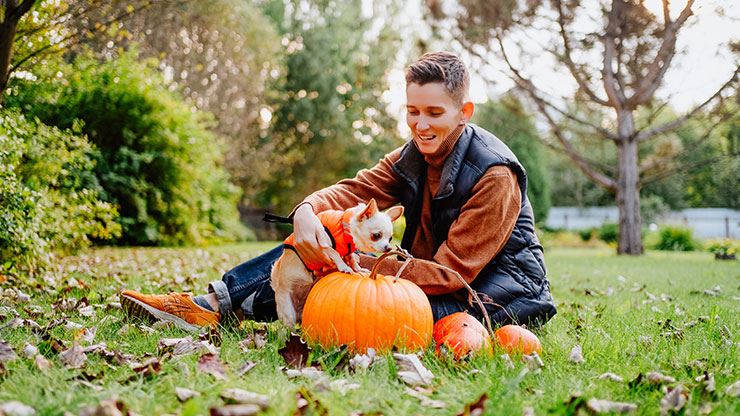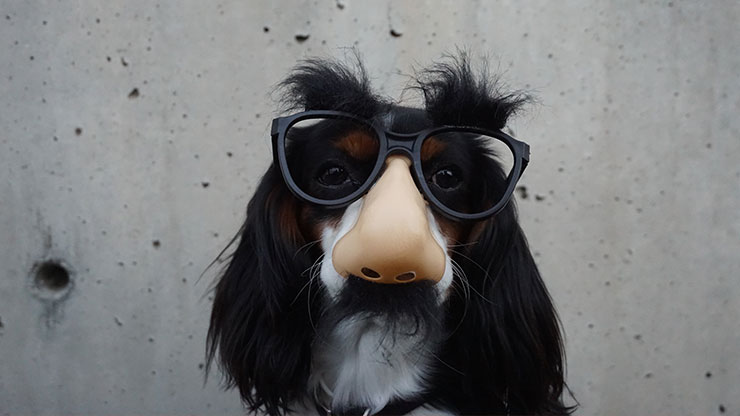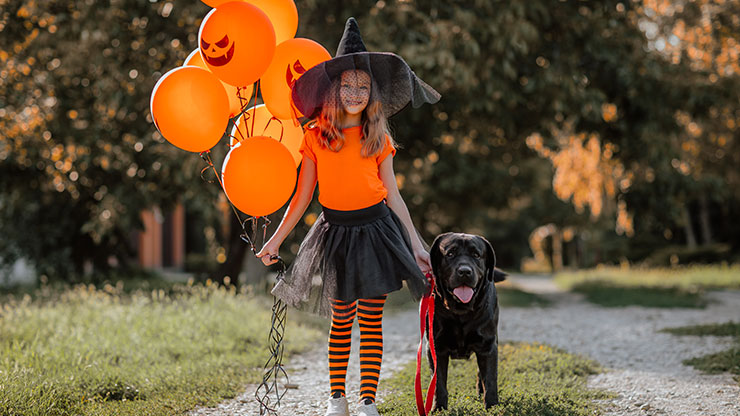
Getting Your Dog Ready for Halloween
The leaves are on the ground, jack-o-lanterns line porches and steps, and the ghost and ghouls come out to play. For many, Halloween is an age-old time of tradition that’s fun for the family. This is a perfect time of year to stop and consider Halloween from the dog’s point of view. For many a canine companion, Halloween simply means lots of new friendly meet-and-greets, new and exciting sights, the sound of fun and excitement in the air, and interesting new scents to smell. For some dogs, though, it can be a truly spooky time of year with scary close encounters with non-human entities; harrowing sights, shapes, and figures; loud, unfamiliar sounds; and strange scents. It can be a tricky time of year for these less socially adept dogs. It’s no surprise that according to many lawyers who specialize in dog bite laws, Halloween is one of the few times of year that dog bites increase. In this article, we will take a look at Halloween from the dog’s perspective, address how misunderstandings can occur, and learn to spot when Fido may have become frightened.
Familiarity Breeds Comfort for Dogs
For the most part, a dog’s mental well-being is governed by a few key factors, including familiar versus novel/new stimuli and space. Familiar stimuli are all the things in life that a dog is familiar with or comfortable with, including scenarios, events, people, places, animals, sights, scents, and sounds. Space is the dog’s proximity to those things or events that dogs perceive as safe and familiar; or novel, unfamiliar, and potentially unsafe. In other words, the space between a dog and something it views as safe and familiar or something it views as unfamiliar or unsafe determines how comfortable a dog is.
These two factors, space, and familiarity go hand in hand. Many dogs are comfortable sharing their space (what they view as theirs or their family’s territory) with familiar people (such as their family or familiar visitors), in familiar settings (such as the home or yard), during familiar scenarios or events (such as a normal evening in the home). However, Halloween presents a unique dilemma for many dogs. It’s a time when swarms of unfamiliar beings, sights, scents, and sounds flood their typically safe environment and territory.

Scary Sights & Scents
Dogs rely on sight to pick up visual cues and to identify familiar shapes. When you add costumes that obscure the outline and shape of people, dogs cannot easily identify a person, even if they are familiar. Also, masks are especially perplexing to dogs, as they do not change to reflect emotions that many dogs have learned to read[O1] . In addition, the scent of spray hair dye, costume makeup, latex masks, and prosthetics adds a plethora of unfamiliar scents, further masking that underneath the masks and makeup are normal humans. Add to this the sheer number of trick-or-treaters some areas can have, and it can seem like an invasion of unfamiliar beings.
Close Encounters of the 1st Kind
Dogs are natural people-magnets, especially to children, which are abundant during Halloween. When many people see a dog out and about during the rush of festivities, they can’t help but want to approach, reach out, and touch it. Many people do not consider how their direct approach in their spookiest attire may affect a dog trying its best to cope with the chaos surrounding it. Most dogs’ preferred response to unfamiliar events that they perceive as scary or unsafe is to flee or move away from it by increasing the space between them and the unfamiliar event. They will try to remove themselves from the situation. If this cannot be done, they may feel they have no other choice than to fight or defend themselves. When a dog cannot move away from something it views as scary, unsafe, or unfamiliar and threatening, incidents between dogs and people can occur, sadly, sometimes in the form of a dog bite.

Keep Pups & People Safe this Halloween
The best and recommended action during Halloween is to leave your pup out of the Trick-or-Treat festivities. Giving them familiarity and space is the best way to neutralize anxiety, fear, or aggression that may arise from the Halloween festivities otherwise. Placing them in a familiar room with plenty of dog-appropriate treats of their own can keep your dog calm and happy without having to stress about defending themself, their family, and their property from an impending monster invasion.
Some of the more socially adept dogs that have been socialized to Halloween shenanigans from a young age can recognize the activities as a fun and friendly event. In this case, if you choose to keep your dog with you while trick-or-treating or handing out candy, keep an eye out for signals that your dog may be overwhelmed. If you see any of the following signals from your dog, you should immediately remove your dog from the festivities.
- Heavy panting, especially with a long, large, spatulate tongue, excessive drooling
- Sweating through the pads (look for wet footprints)
- Trying to escape, hide, pull or move away
- Enlarged eyes, showing whites of the eyes
- Frantically looking around, nervousness, extreme shyness
- Stiffened or rigid movements or freezing of the body when touched or approached
- Refusing to move
- Ignoring commands
- Lunging at others in either extreme excitement or agitation
- Growling, flashing teeth, or air snapping
- A wagging tail is not a sign of a friendly dog but of an excited dog. It could be a dog that’s excited to bite! So don’t misinterpret this signal.
It’s a good idea to know what a calm and happy dog looks like so that you have a reference to compare the above signals to. Calm, happy dogs typically…
- Walk calmly on a leash
- Respond to commands and cues
- May pant gently, with tongue not breaking more than an inch or so below the lower teeth
- Are relaxed in movement
- Do not try to move away or escape
If you’re uncomfortable reading your dog’s signals, then worry not! When in doubt, leave the dog out! Most dogs are not comfortable with Halloween activities. It’s best to err on the side of caution and leave your canine companion home where he’s in a familiar and safe space rather than leaving him to cope with the night’s tricks and treats. If you decide to bring your pup out and about for a night of spooky fun, then familiarize yourself with the distress signals listed above. Be ready to remove him whenever any distress signals become present. We hope that with this information, you can make the right decision for your canine companion this Halloween and that your night is safe with more treats than tricks!










